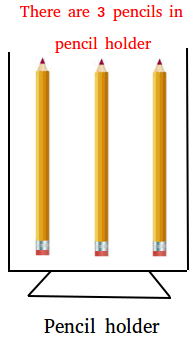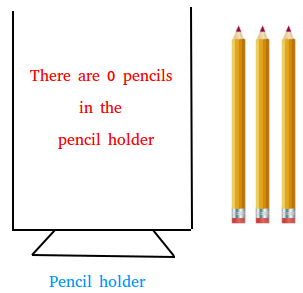What is a Zero? Definition and Examples
What is a zero? Zero is used to indicate the absence of items (or objects) or the fact that there is nothing. The numerical symbol we use to represent zero or the absence of objects is 0.
Zero can also be given the following names:
- Nil
- Cipher
- Naught
- Nought
- Zilch
- Nada
For example, if there are no horses in a ranch, you can say that the number of horses in the ranch is zero (0).
Looking at the image below, you can see that there are 3 pencils in the pencil holder.

However, what happens if we remove the 3 pencils from the pencil holder as shown below?

Since now there are no pencils in the pencil holder, you can say that there are zero pencils in the pencil holder.
Zero as a Placeholder
When a number has more than 1 digit and there is no value for a specific place or fixed position, we use 0 as a placeholder.
In the number 605, we use a zero as a placeholder in the tens place because there are no tens.
In the number 4300, we use two zeros as placeholders (one zero in the tens place and another zero in the ones place). We do this because there are no numbers in these two places.
What is a Zero in Terms of Some Common Number Sets?
Zero as a whole number, integer, rational number, or real number
Basically, 0 is a whole number and 0 is the first number that appears in the set of whole numbers. However, zero is also an integer, a rational number, and a real number. Zero is not an irrational number since we already said that it is a rational number.
A number cannot be both rational and irrational at the same time.